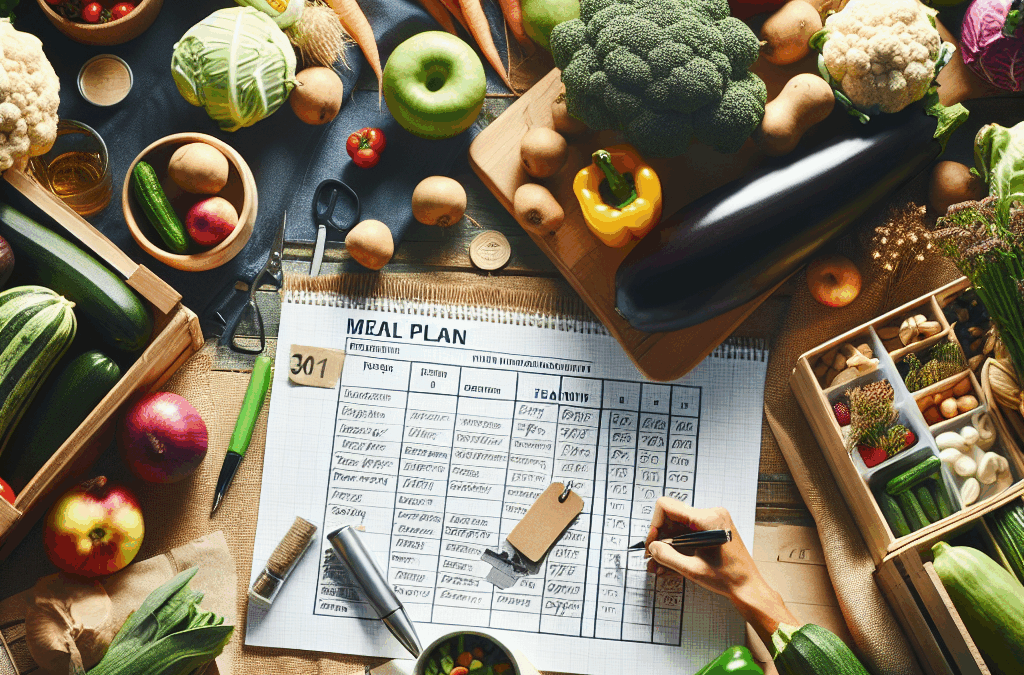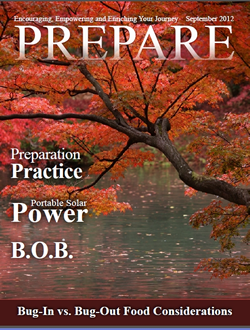Understanding Your Local Harvest Cycle
Research Seasonal Availability
When I first started diving into meal planning using homestead harvests, one of the biggest eye-openers for me was understanding the concept of the local harvest cycle. Just like the seasons change, so does the availability of fresh produce. I began to map out what’s in season month by month, which allowed me to plan my meals around what was fresh and abundant.
This kind of research not only puts you in sync with nature, but it can also save you some cha-ching! Buying seasonal fruits and veggies often means lower costs since they’re readily available in the market. Plus, you can’t beat that taste… fresh from the farm to your table! You can check government agricultural sites or even local farmers’ markets to get a feel for what’s going on in your area.
By knowing what’s available, you’re set up for success. You can whip up meals that are not only tasty but also nutritious, which is a win-win in my book. So go ahead, arm yourself with knowledge, and you’ll be reaping the rewards in no time!
Explore Farmers’ Markets
Let me tell ya, farmers’ markets are a game changer for anyone looking to innovate their meal planning. There’s something magical about strolling through vendors’ stalls, chatting with farmers, and picking out the freshest produce. I’ve found that connecting with local growers not only enriches my meal planning experience but gives me insight into the best types of produce available.
Not only can you find ingredients you may not have considered before, but you also have the chance to ask questions about their farming practices. I love learning about heirloom varieties or organic methods, which can influence my meal prep. Plus, it’s a great community event to meet fellow foodies!
So, next time you’re thinking about what to plan for dinner, take a stroll through your local farmers’ market instead of heading to the grocery store. You’ll be surprised at how many ideas and inspirations you’ll find, all while supporting your community!
Document Your Favorite Finds
After hitting the markets, here’s my pro tip: always keep a journal or a digital note on your phone about what you find and love. I did this last summer, marking down my favorite fruits and veggies and the meals I made with them. Not only did this help me remember the bomb meals I created, but it also made next year’s planning a breeze.
By documenting, I felt like I had my own guide to seasonal meals. For example, when the tomatoes were just bursting with flavor, I recalled how I paired them with basil and mozzarella for an easy summer salad. This practice keeps me enthusiastic about cooking, and I always feel inspired to try new recipes with what I’ve harvested.
It’s like having a treasure trove of ideas at your fingertips! So yes, take a few minutes at the end of each week to jot down your experiences, and you’ll thank yourself during those busy weeks when meal planning feels like a chore.
Creating a Flexible Meal Plan
Draft a Flexible Weekly Menu
When I started designing my meal plans, flexibility became my best buddy. Life is unpredictable; sometimes I find myself busy with unexpected events, and sticking to a rigid plan just doesn’t work. So, instead of telling myself Tuesday is taco night, I draft a menu with ideas like taco night, stir-fry, or easy pasta—depending on what fresh ingredients I have on hand and what my schedule looks like.
This way, I avoid last-minute food runs and disappointment when I realize I didn’t have the right stuff to make that one planned dish. Instead, I can pivot to whatever looks the best in my fridge. Plus, it keeps the cooking fun and exciting, rather than feeling like a chore.
Each Sunday, I sit down with a cup of coffee and a blank planner page. I think about what’s in season, combined with my schedule. It’s a relaxed and enjoyable process, allowing me to anticipate what I’ll cook throughout the week.
Incorporate Leftover Strategies
Let’s be real—if you’re anything like me, some meals might yield more food than you initially thought. That’s where leftover strategies fit right into the game! I’ve learned to think about how to creatively use those leftovers in other meals. For instance, if I roast a chicken, its shredded remains can easy transform into chicken salad or a zesty curry later in the week.
This not only reduces food waste but also makes life simpler. I try to plan my week around versatile ingredients where the first meal sets me up for the next. It’s a great way to keep flavor fresh while saving time and effort!
Remember, embracing leftovers is all about altering them into something new and delicious. You’ll be surprised at the culinary innovation that comes from being a little resourceful. It feels great to enjoy a meal without feeling bad about wasted food!
Listen to Your Family’s Preferences
This step is essential. I quickly learned that no matter how blissful my meal plan looked, if my family wasn’t excited about it, then what’s the point, right? I started including my fam in the planning process—not only does it lighten my workload, but it also gets everyone hyped up for meals. I ask them to share what they love or want to try, and I’ve even set up a ‘meal ideas’ bowl in the kitchen.
This feedback loop is essential because it not only introduces variety, but it makes everyone feel valued and invested in our meal planning journey. Plus, when everyone’s excited, it transforms dinner time into a fun family affair!
So, when you’re finalizing that weekly meal plan, don’t shy away from consulting your kitchen crew. It’s about creating a balance that everyone can enjoy and cherish around the table.
Preserving Homestead Harvests
Learn Preserving Techniques
One of the coolest parts of homestead harvests is knowing how to preserve the bounty. I started by learning different food preservation techniques—like canning, freezing, and dehydrating—allowing me to enjoy fresh flavors all year long. Honestly, taking the time to prep your ingredients for preservation is a rewarding effort that pays off in the middle of winter. I can just pull out some home-processed tomatoes or greens and use them in my meals.
Canning was initially scary for me, but after a few online tutorials, I felt super empowered to preserve my summer harvest. It became a kind of fun (and slightly messy) science experiment in my kitchen, and I now have jars of flavorful sauces and veggies lined up on my shelf!
Don’t just take my word for it; give preserving a shot yourself! You’ll be amazed at how much you can create and how it sustains your cooking through the seasons.
Creative Recipe Ideas for Preserved Foods
So, you’ve managed to put your harvest away for safekeeping; the next step is figuring out how to use it. If there’s a stash of canned green beans sitting on a shelf, mix ‘em into a cozy soup, or if you froze a bunch of berries, how about a delightful smoothie or crumbles? It’s about getting inventive with what you’ve stored!
Each time I pull out my preserved goodies, it feels like a tiny celebration of the hard work that went into harvesting. Plus, it stokes my creativity in the kitchen, making cooking feel less routine and more exciting. You’d be surprised how a simple ingredient can lead you to create new family favorites!
So, keep exploring and mixing it up in the kitchen after preservation, and you’ll be on your way to enjoying those flavors long after harvest season has passed!
Share Your Preserved Harvests
Lastly, here’s a little tip—share what you’ve preserved! I can’t tell you how much joy it brings to gift jars of homemade jams or dried herbs to friends and family. It’s a unique way to showcase your effort and creativity, plus it opens up conversations about homesteading and meal planning!
Not only is it a great way to connect, but sharing your harvest also spreads the love for fresh, local foods. Who doesn’t love gifting? And let’s be honest—everyone loves getting home-cooked goodies!
So don’t be shy; let those jars and bags go out into the world. You might inspire others to begin their very own homestead journey, and isn’t that the ultimate win? Spread the good vibes around while promoting a sense of community.
Embracing Community and Collaboration
Join Local Gardening Clubs
Getting involved in local gardening clubs was another step that transformed my meal planning game. It’s wonderful to be surrounded by like-minded folks who are just as passionate about fresh foods and innovation. These clubs provide an incredible resource for learning new techniques, sharing tips, and swapping seeds or extra harvests!
I’ve made some great friends along the way—and not to mention they’ve taught me cool tricks about growing my own herbs and veggies. Participating in workshops has also opened my eyes to new flavors and ingredients I would’ve never tried otherwise.
So if you haven’t already, reach out to community boards or check social media to find groups in your area. You’ll find more than just plants and produce; you’ll find friendships and knowledge that can really elevate your meal planning.
Collaborate on Community Gardens
Sometimes, being a solo homesteader can feel isolating. That’s when getting involved in community gardens offers a fresh dose of collaboration. By sharing the space and resources with others, I’ve learned loads about diverse crops and how to approach gardening from different angles.
It’s exhilarating to be part of a project where everyone pitches in, planting and harvesting together. We’ve had fun theme days, like making salsa from our harvests and hosting cookouts. The joy spreads throughout our community, and sharing the fruits of our labor is the cherry on top!
If you’re on the fence about starting a community garden, go for it! You’ll be pleasantly surprised at what can come from working together with your neighbors.
Start a Recipe Swap
Finally, there’s something deeply delightful about sharing recipes with others in your community. I’ve started a small recipe swap group with folks from my neighborhood, and it’s become a fun monthly routine. Each time we gather, each person shares a dish they’ve made, highlighting local ingredients or preserved goods.
This not only fuels creativity but creates a treasure trove of ideas for my meal planning. Plus, I love hearing the stories behind each recipe—many have family histories, which enriches the experience! It’s hard not to feel inspired when surrounded by delicious food and passionate home cooks.
So why wait? Gather a few friends or neighbors for a recipe swap, and watch how it flourishes. You just might discover new favorites and foster bonds over simple, delicious food!
Frequently Asked Questions
What is the first step in innovating meal planning with homestead harvests?
Understanding your local harvest cycle is key. It sets the foundation for planning your meals around what’s in season, maximizing freshness and flavor.
How do I start preserving my harvests?
Begin by learning basic preserving techniques like canning, freezing, and dehydrating. Start with a few simple recipes, and gradually you’ll build confidence and create a stockpile of preserved foods!
What if my family doesn’t like my meal plan?
Involve your family in the meal planning process! Ask for their preferences and include them in discussions—it creates excitement and increases their decision investment.
Are farmers’ markets worth the visit?
Absolutely! Farmers’ markets are great for fresh produce and connecting with local farmers. Plus, you often discover unique ingredients that inspire creative cooking!
How can I get involved with my community regarding meal planning?
Consider joining local gardening clubs or starting community gardens. You might also organize a recipe swap; it’s a great way to share and learn together!





